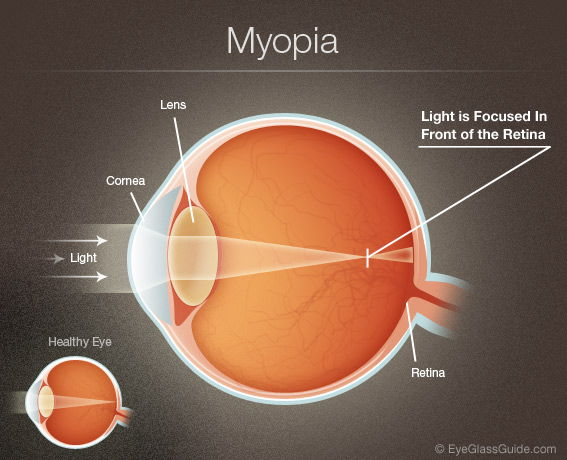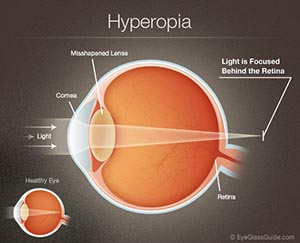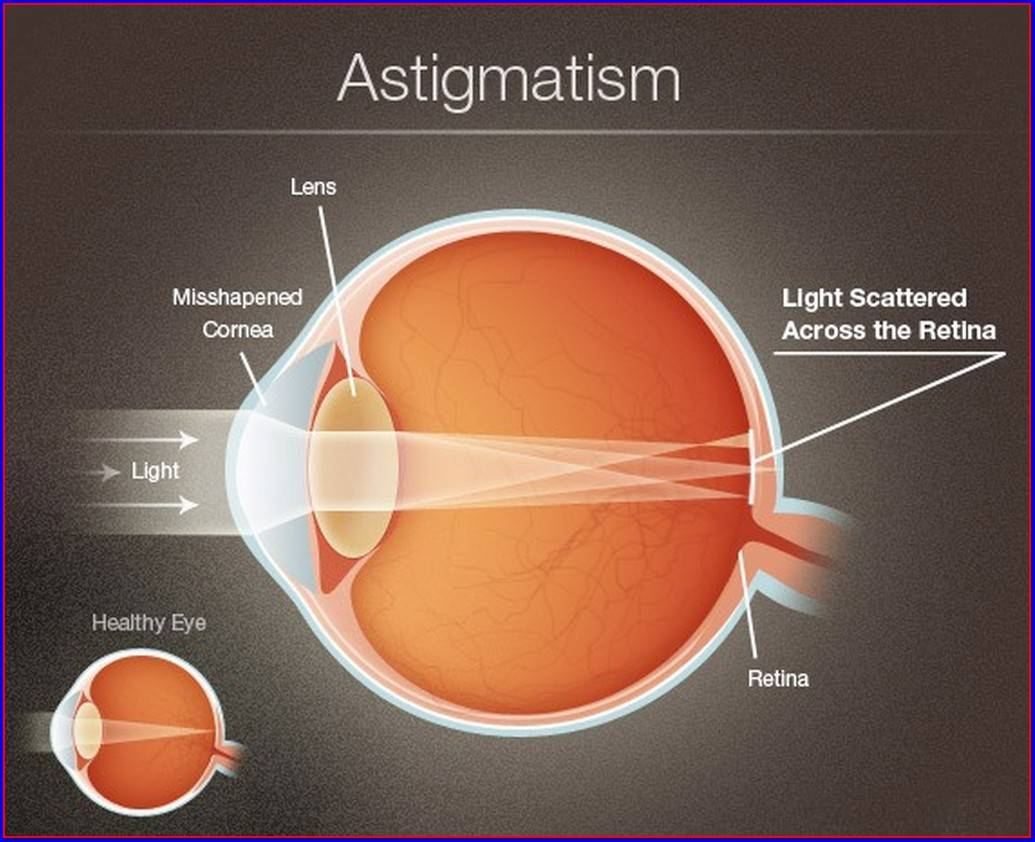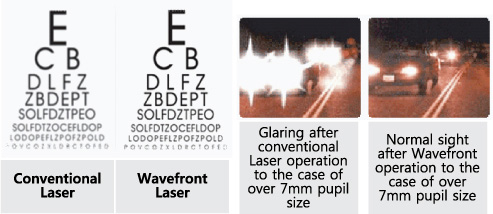- Refractive surgery includes the correction of refractory anomalies, such as myopia, hyperopia and astigmatism.
- The purpose of refractive surgery is to eliminate or decrease the use of glasses or contact lenses.
- After the surgery the majority of patients can see clearly at least 5/10 without the use of visual aids.
- Laser Refractive surgery doesn’t require hospitalization in any clinic or hospital. Patients can return to their daily routine in about one to four days.
Myopia
To be corrected, the myopic cornea has to become flatter. Tissue is removed from the center of the cornea.

Hyperopia
To be corrected, the hyperopic cornea has to become steeper. Tissue is removed from the periphery of the cornea.

Astigmatism
In astigmatism, the cornea is elliptical, and has to become spherical. The elliptical section of the cornea is removed

Presbyopia
The ability of focusing at near objects is called accommodation of the eye. This ability starts to weaken around the age of 40. There was no way to deal with this problem until now.
Today there are many techniques to deal with presbyopia, custom for every case. Learn how presbyopia can be corrected here.
Excimer laser
In 1980’s, studies showed that excimer laser that is used on microchip manufacture, had the potentiality to be used the ophthalmology. Unlike other lasers that destroy near tissue, excimer laser doesn’t raise tissue temperature, creating an extremely smooth corneal surface.
AMARIS Excimer Laser of SCHWIND Eye-tech-solutions is the epitome of technology is refractive surgery. This type of laser apparatus is used for treating myopia, myopic astigmatism, hyperopia and hyperopic astigmatism.
Amaris is equipped with one of the fastest eye trackers, with double infrared lighting system. Thanks to its unique ability to spot even the slightest eye movement, ensures a safe and high-quality result.
PRK, LASIK, Epi-LASIK
They are used to correct low and medium grade myopia (6 to 7 grades), with or without astigmatism.
A thin layer of the cornea, epithelium, is removed. Then excimer laser is aimed to form the corneal surface. The quantity of the removed tissue depends on the correction grades. In most cases, only 5-10% of the corneal thickness is removed. The recovery of this method is slower comparing to LASIK method.
LASIK (Laser in Situ Keratosmileusis)
Is used to correct low to medium high myopia (-14.00), and low to medium hyperopia (6.00)
With or without astigmatism. It combines the excimer’s high precision and the advantage of quicker recovery.
In PRK tissue is removed from the corneal surface. In LASIK the tissue is removed from one intermediate level.
A special tool is used to create a very thin flap in the cornea. The flap, that is attached to the cornea is lifted and inverted. Excimer laser removes the wanted tissue and the flap is attached back to its original position. A simple drying makes sure that the flap stays in place and stiches are not required. LASIK results are quicker than those with PRK.
Customized-Wavefront technology LASIK.
The latest technology in refractive surgery. It has to be understood that the eyes may have the same grades, but they are never same. The Visual system of each eye is always different.
With wavefront technology, a detailed image of the eye’s visual system is formed. Also, the way that the eye receives and processes the light is calculated. The surgeon inserts the wavefront parameters in the laser’s computer that is used during the surgery. By this method we correct not only the refraction of the eye, also, the customized defects of the visual system of each eye.
Wavefront is the technology that allows scientists to manufacture high quality telescopes, without optical errors and diffractions. Thanks to the same technology the surgeon can detect and estimate the special parameters of your eye 25 times more accurately than before.

Astigmatic keratectomy (AK)
In mixed (hyperopia with myopic astigmatism, or the opposite) and high astigmatism (above 6 grades) where excimer laser techniques can’t be applied, relaxing incisions are used. As the name suggests these incisions, relax the curvature of the cornea and make it rounder, correcting the astigmatism. This procedure is simple and takes only 5 minutes to be completed.
In cases where laser refractive surgery can’t be applied, such as high myopia, hyperopia astigmatism, or irregular corneas, there are other methods to achieve the correction of refractive anomalies.
Implantable Contact Lenses (I.C.L.)
